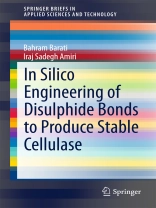This Brief highlights different approaches used to create stable cellulase and its use in different fields. Cellulase is an industrial enzyme with a broad range of significant applications in biofuel production and cellulosic waste management. Cellulase 7a from Trichoderma reesei is the most efficient enzyme in the bio hydrolysis of cellulose. In order to improve its thermal stability, it can be engineered using a variety of approaches, such as hydrophobic interactions, aromatic interactions, hydrogen bonds, ion pairs and disulfide bridge creation.
Tabella dei contenuti
Introduction of Cellulose and its Application.- Literature Review.- Methodology of Mutant Creation and Molecular Dynamic Simulation.- Results and Discussions.- Conclusions.
Circa l’autore
Dr. I. S. Amiri, received his B. Sc (Hons, Applied Physics) from Public University of Orumiyeh, Iran in 2001 and a gold medalist M. Sc. from Universiti Teknologi Malaysia (UTM), in 2009. He was awarded a Ph D degree in nano photonics in 2013. He has published more than 200 journals/conferences and books in Optical Soliton Communications, Laser Physics, Photonics, Optics, Nanophotonics, Nonlinear fiber optics, Quantum Cryptography, Optical Tweezers, Nanotechnology, Biomedical Physics and Biotechnology Engineering. Now he is a visiting research fellow in University of Malaya, 50603 Kuala Lumpur, Malaysia.
Mr. B. Barati received his B. Sc (cellular and molecular Genetics) from Azad University of Tonekabon, Iran in 2011 and he is recently graduated from M. Sc. in Biotechnology from Universiti Teknologi Malaysia (UTM), in 2013. His research interests are in the field of protein engineering, enzyme production, Genetic engineering, drug design, molecular dynamic simulation and bioinformatics.












